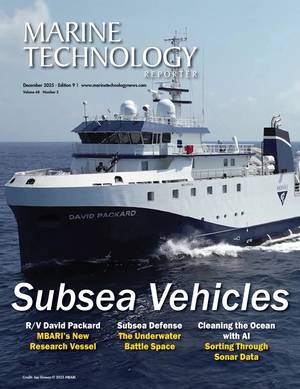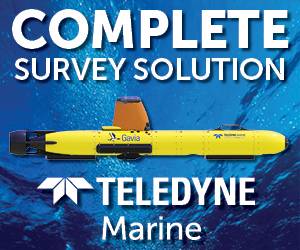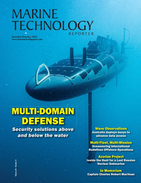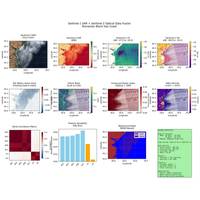
AI Helps Cleaning Up of Marine Pollution
cleanup model across the Mediterranean.Recycllux was founded in 2021 by Sorina Uleia as a response to her personal frustration at plastic pollution affecting the sea waters of her childhood. With over two decades of experience in technology, innovation, and business development, she brought together a diverse team with expertise in AI, climate science, and ocean solutions to develop what is now a scalable framework for marine plastic recovery, integrating technological advancements and empowering local communities.Using AI to analyze imagery from the EU’s Copernicus satellite network, the platform

Profiling Survey of the Columbia River Project Site Completed
the sediment’s natural structure. In contrast, PV images provide plan-view perspectives that reveal grain types, shell deposits, surface morphology, and visible organisms."The SPI/PV system is incredibly versatile, and we have already successfully used it to study sediment conditions in a diverse range of marine environments, from shallow inland marshlands to deep oceans,” said Stupakoff.The 400+ images captured from the Columbia River are now being examined by CSA Subject Matter Experts (SMEs) for sediment composition, fauna, and submerged aquatic vegetation to produce a precise map

Golden Software Makes Upgrades Grapher Scientific Package with Enhanced Templates
, and graphing for Grapher users at every level.Grapher enables users to make better decisions by visualizing and communicating complex data sets in ways that simply can’t be accomplished with spreadsheets. Enhancements in the latest release of Grapher gives users faster and deeper insights into diverse data sets, including chemical, physical, geologic, and geospatial data, through 80 different 2D and 3D plotting types. The package is used extensively by scientists and engineers in environmental services and consulting, climate research, exploration, and academic pursuits.The newest release of
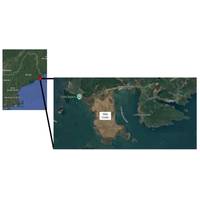
U.S. Army ERDC Seeks Shoreline Restoration Proposals at Naval Support Area (NSA) Cutler
required for development of NHI and conventional infrastructure along with expertise to evaluate anticipated performance of the proposed intervention. Example team representatives include, but are not limited to: field practitioners with experience applying large scale NHI interventions in a diverse number of coastal landscapes and settings; scientists and engineers with experience quantifying engineering performance of NHI and conventional infrastructure; and personnel with expertise developing state and Federal permit applications (and all supporting permit application exhibits) for NHI projects
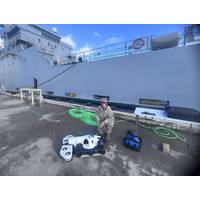
Hull Cleaning Robotics: Army Beats Navy – the Hegseth Way!
must invest their own capital and act with urgency to accelerate capability delivery. Greensea IQ exemplified this ethos, showcasing how private-sector agility can bolster military readiness.Image courtesy Colonel Rachael HoaglandLearning Through DemonstrationThe demonstration brought together a diverse community of stakeholders — Army boat crews, Army and Navy maintenance teams, Army dive units, Navy Salvage Divers, engineers, and industry experts—who collectively affirmed the value of robotic hull cleaners in addressing fouling caused by marine growth such as barnacles, algae, and

NOAA-Led Expedition Maps Cook Islands’ Exclusive Economic Zone
employed remotely operated vehicles, advanced mapping technology, and telepresence to collect critical data on abyssal plain habitats. Seven Cook Island-based scientists joined the mission, which included imaging and cataloging seabed and biological compositions, providing valuable insights into diverse seafloor habitats. This publicly available data will help inform and advance the responsible management of marine resources in the region.The mission concluded with a port event hosted by the Cook Islands Government, showcasing the expedition’s findings to the local community. U.S. representatives
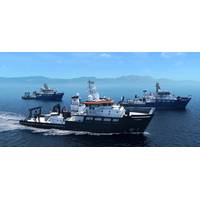
Sonardyne Technology Selected for New Oceanographic Research Vessels
Foundation (NSF) Regional Class Research Vessel (RCRV) construction program.Led by Oregon State University, the RCRVs are being built for the US' Academic Research Fleet (ARF), enabling a new era of coastal and regional marine science. To support the RCRV's scientific missions, across diverse marine environments, Oregon State University selected Sonardyne's Ranger 2 Gyro USBL 7000, engineered to meet both the demanding, multidisciplinary research objectives of the ARF and vessel-build requirements.The first system has recently been delivered to Oregon State University to be fitted

Lander Lab: Cost Efficiency of Baited Ocean Landers
diver video transects. Additionally, BRUV offers a permanent sampling record that can be reviewed to reduce interobserver variability, provides data on habitat types and can be deployed in deep or heavily structured ecosystems.BRUVs can provide relative measures of species richness and abundance in a diverse range of conditions and habitats. Stereo-BRUV systems can determine the body size of fish and also produce a digital depth-of-field map, where features and creatures can stand out from their surrounding environment. Fish size can be used as a proxy for biomass, an essential metric for fisheries
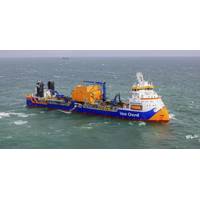
Ecowende, Van Oord Start Eco-Friendly Offshore Works at Hollandse Kust West
for fish and other marine life. Specially designed bays along the protection add further habitat.The combination of variations in stone size and crevices, together with bay structures, enhances lee zones and creates more variety in open spaces; the rock–sand interface stimulates a richer and more diverse marine ecosystem, supporting species such as the threatened Atlantic cod, according to Van Oord.Van Oord said the initiative transforms scour protection from a protective measure into an active contributor to marine biodiversity. Once installed, the structures will be closely monitored to assess
 December 2025
December 2025
